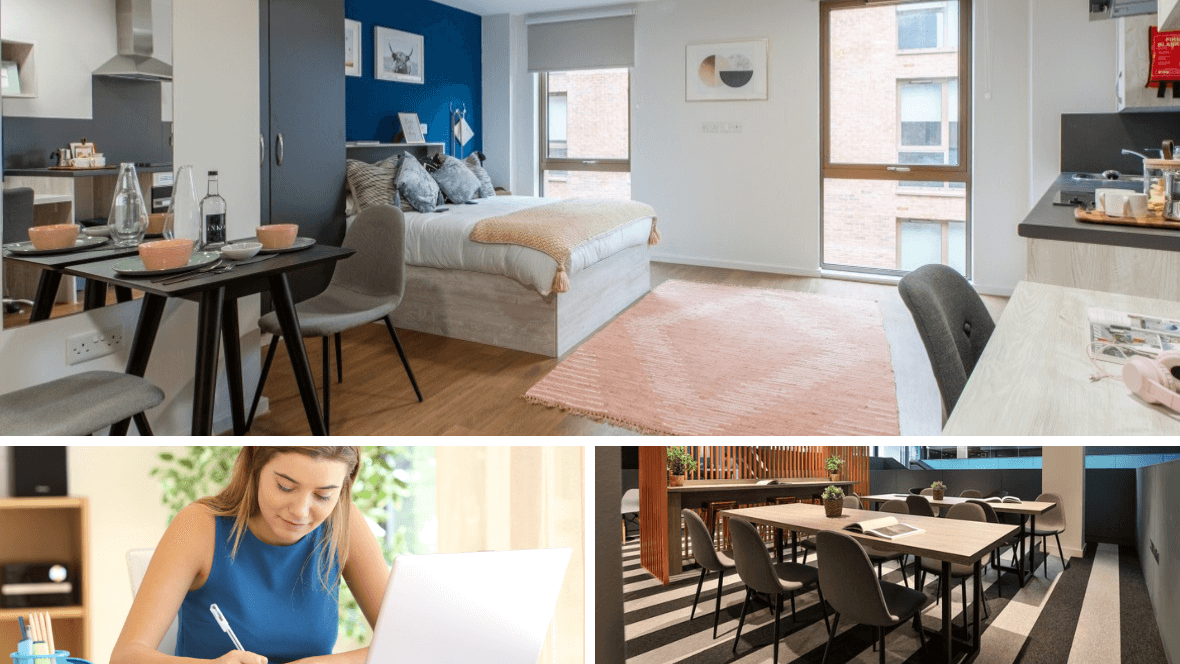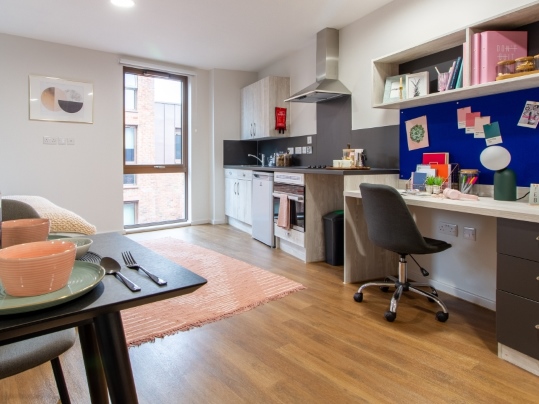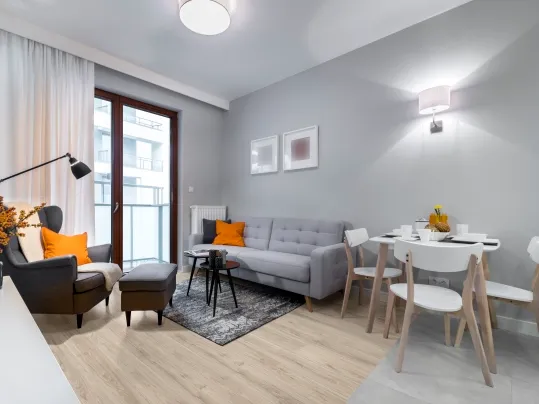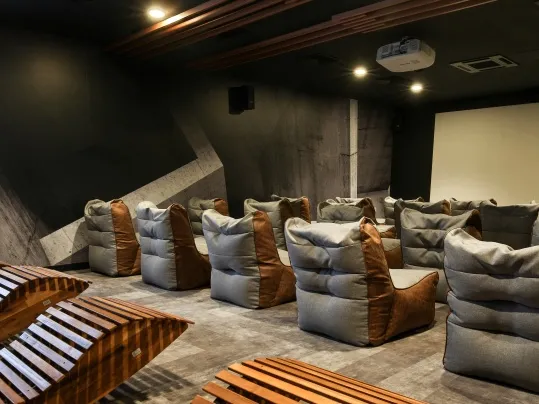Student Accommodation
Improving Student Accommodation from the Floor Up
Floored It Blog Series
February 2021

The education sector has been among those most affected by COVID-19 and the restrictions put in place to limit the transmission of the virus. Here Elizabeth Bushell, our Key Account Manager for Student Accommodation, explains how this will impact student accommodation and how the correct choice of flooring can help overcome these challenges.
The impact of the COVID-19 pandemic and the events of the past year have radically changed the way that universities operate. In fact, there have been a number of approaches adopted by different institutions with some, such as the University of Cambridge, moving completely online. Others have taken a hybrid approach by hosting lectures online, with smaller groups meeting for socially distanced teaching sessions. With large proportions of courses now online, limited access to library facilities and restrictions on socialising, students will now be spending increased amounts of time in their accommodation, making it more important than ever that they are fit for purpose.
Creating the right environment can ensure students are healthy and happy, as well as supporting their academic performance. Even before the events of the past year, there was increasing focus on how the design of accommodation impacted the wellbeing of students and it is now more crucial. There are a range of factors that need to be considered and for many areas the flooring plays an important part.
.png)

The negative impact of poor acoustics and noise pollution on wellbeing is increasingly well understood. In fact, the World Health Organisation (WHO) has stated that the negative health effects of environmental noise ranks second only to poor air quality. Unwanted noise has also been linked to higher levels of stress and impacts a person’s ability to concentrate.
Selecting the correct floor covering can help reduce one of the key sources of noise transmission between floors: impact sound. This is generated by people and objects coming into contact with the floor.
With each room in a student accommodation block being occupied for a greater proportion of the day this can be a significant issue.
There are a range of flooring solutions available that will provide high levels of acoustic performance, while also meeting the other requirements of a flooring in this environment.
For example, our Luxury Vinyl Tile collection, Allura Decibel, delivers 19 dB impact sound reduction, without having to compromise on ease of installation or design.
In fact, the collection is available in 30 contemporary designs, allowing specifiers to create attractive yet practical spaces within student accommodation.
Our Sarlon vinyl range is also very popular within student accommodation settings, as it has been developed and tested to maximise impact sound reduction in heavy traffic commercial spaces, while maintaining minimum residual indentation. It is available in two levels of impact sound reduction: 19 dB and 15 dB.
However, for those that desire a textile floor covering, both carpet tiles and flocked flooring are the perfect solutions. Carpet tiles and planks, such as those from our Tessera range are simple to fit, easy to maintain and can deliver sound reductions of up to 28 decibels (dB). Whereas our Flotex product, which offers the best of both a carpet and resilient floor covering, provides up to 20 dB impact sound reduction.

Allura Decibel in open plan living space
%20(1).webp)
Sarlon in communal area in student accommodation
Another consideration for ensuring a healthy environment within student accommodation is air quality. A key part of this is avoiding the use of materials, including flooring, that emit high levels of chemicals such as volatile organic compounds (VOC) when new. There are a range of floor coverings available that have been designed with very low VOC levels and as such these can help to optimise indoor air quality. It is important to check the product information of any new materials to ensure they will not produce harmful emissions. All Forbo floor coverings are phthalate free and low in VOC emissions.
In addition, particulate pollution is another contributor to poor air quality. Flocked floor coverings are ideal for trapping particles of dust and pollen to improve air quality. When choosing a product, specifiers should look for products, such as Forbo's Flotex that has the Allergy UK Seal of Approval. This certifies that the product has been independently tested and proven to reduce allergens in the environment.


With the impacts of climate change and global warming closer to home than ever before, there’s now more of an incentive than ever for the built environment sector to consciously choose sustainable solutions when designing buildings – including student accommodation.
Sustainable solutions now exist across all facets of the industry. However, over the last decade, sustainable flooring solutions, such as our CO2 neutral (from cradle to gate) Marmoleum range, has experienced particular growth.
Marmoleum, a sustainable flooring solution, is made from 97% natural raw materials. This includes flax, jute and linseed oil, which are grown and harvested annually, and wood flour and pine rosin that are sourced from sustainably managed forestry plantations.
In fact, 62% of the natural ingredients in Marmoleum are renewable, of which 29% are rapidly renewable, meaning it will grow back within one year. Marmoleum also boasts 43% reused and recycled content to reduce the demand for virgin raw materials.
What’s more, as the CO2 produced in the extraction, transportation and manufacturing process of Marmoleum is balanced by the removal of CO2 through the growing of its natural ingredients, the solution provides cradle to gate CO2 neutrality.
Verified by third party Environmental Product Declaration (EPD)s, the weighted average of our Marmoleum range is carbon neutral without offsetting. This reduces the impact of Global Warming Potential.
For example, using Marmoleum 2.5mm on a 10,000sqm project could equate to a 66,200kg/CO2 saving when compared to a PVC vinyl floor.
.webp)
In shared and communal areas of student accommodation, encouraging the correct and COVID-safe use of the facilities is important. It might be that, in line with government guidance, a one-way route through the building has been established. Using the flooring to mark the route and direction is an excellent way of reminding people to follow the measures put in place. There are now options for arrows to be incorporated into new and existing floor designs, providing a more robust alternative to temporary floor stickers.
At Forbo, we have developed a service for our Tessera Layout and Outline carpet tile collection and our resilient sheet ranges. The service allows you to choose carpet tiles that feature directional arrows within the design, or have loose arrows cut into existing resilient installations or resilient materials.
Furthermore, where people need to queue, the use of circle shapes on the floor can help to encourage people to remain a safe distance apart. For example, our Allura LVT collection is available in circle shapes, which are inlaid within a square tile format, to easily achieve this.
Finally, it is important that all flooring in student accommodation facilities are both durable and easy to clean to ensure a hygienic environment can be maintained. Products that can withstand repeated thorough cleaning is essential and will also help extend the life of the floor and minimise expenditure on replacement.
With the COVID-19 pandemic still on-going, it is still unclear how education, and universities in particular, will need to adapt and change. However, it is important that accommodation providers ensure a healthy, safe and comfortable environment, as accommodation looks set to be an increasingly important part of the student experience.
Example of directional arrows in our Tessera carpet tiles

Keeping cleaning and maintenance easy with Marmoleum